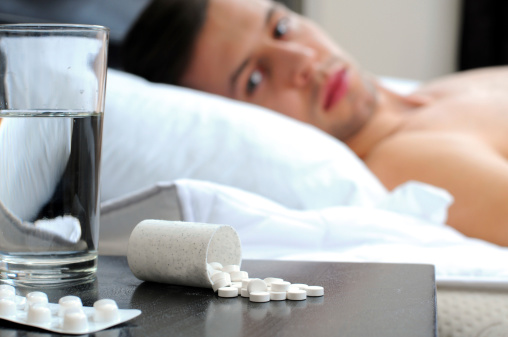Researchers from the CDC’s National Center for Health Statistics have just published a survey on the use of prescription sleep aids in the US. The startling results were that 1 in every 25 Americans is taking a prescription sleep medication. They also found that women were more likely than men and people over age 50 were more likely to be taking sleeping pills. Individuals who had been diagnosed with a sleep disorder or told their doctor that they had trouble sleeping were likely to be prescribed sleep medicines.
So what does this mean? I believe it points out several things. One is that we as physicians, although well-meaning, prescribe sleep aids too frequently. This is a result of several factors. The first is that most physicians and health care providers are not trained in non-pharmacological techniques for insomnia such as Cognitive Behavioral Therapy and proper sleep hygiene. Secondly, many of our primary care providers are so busy and over-worked that they just don’t have the time necessary to delve more deeply into the root causes of the many patients with insomnia.
At least 40% of all chronic insomnia sufferers have an associated psychiatric disorder, such as depression or anxiety, which may be driving the insomnia. In the older population, medical problems such as heart disease, pulmonary disease, arthritis, or chronic pain are a major cause of insomnia. Other frequently underappreciated causes of insomnia include primary sleep disorders such as sleep apnea, restless legs syndrome or abnormal movement disorders during sleep.
The appropriate diagnosis and treatment of these patients requires that the underlying disorder, as well as the insomnia, be addressed. The temporary use of prescription sleep medications in these instances may be helpful. However, I emphasize the word temporary. I believe that with a better appreciation of how insomnia and these disorders interrelate we will see a drop in the use of prescription sleep medications.
Finally, there are some with insomnia for whom there is no alternative but to take sleep medications. These people do not respond to non-pharmacological treatments. We believe many of these folks have an intrinsic state of hyperarousal, possibly metabolic and/or hormonal related, which interferes with their ability to sleep. However, the number of people that this comprises is far less than 1 in 25.
The take home message here is that we are prescribing and consuming sleep medications far too often. We need to set about educating both health care providers and the public about how successfully insomnia can be addressed and treated without medication. The key may lie in a redirection of medical resources and increased education.


